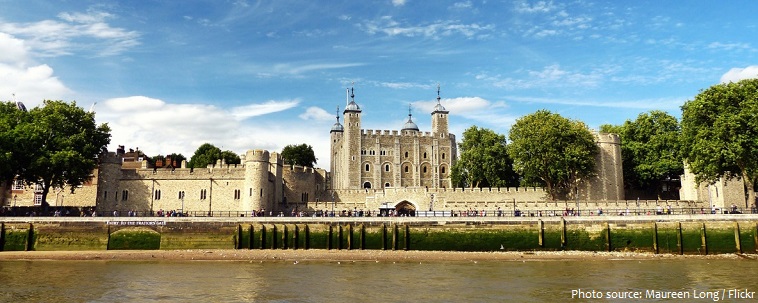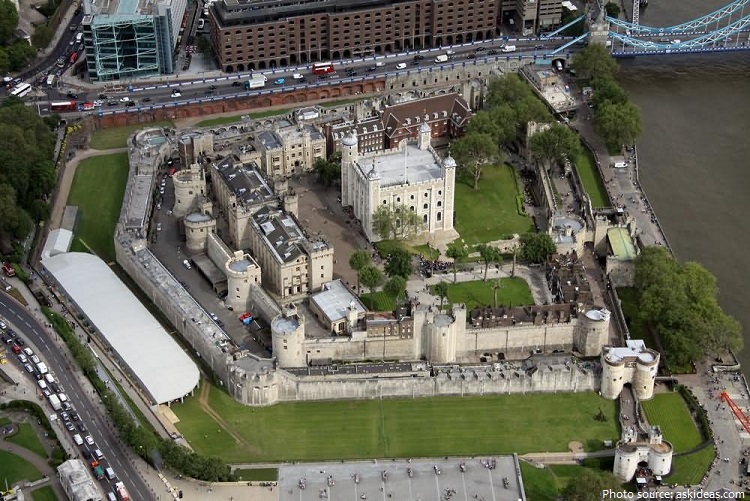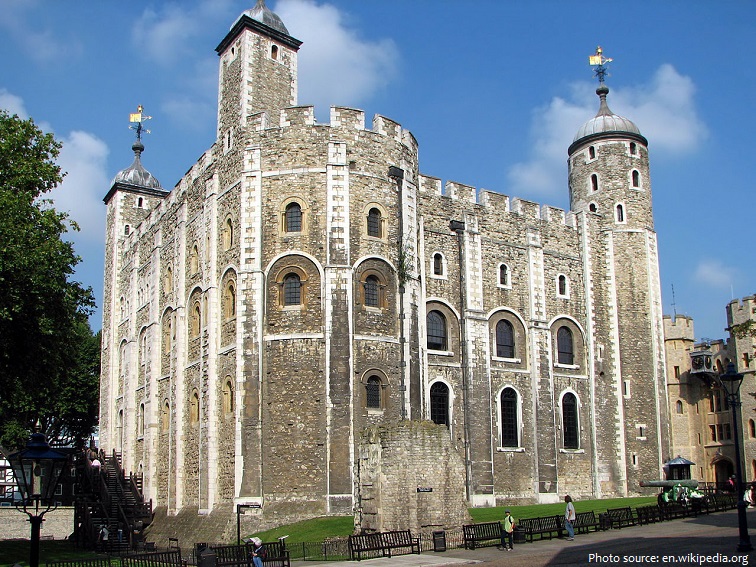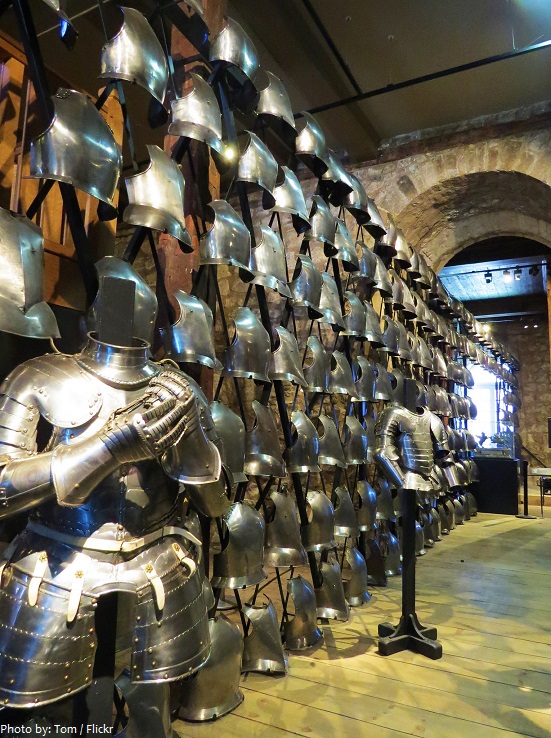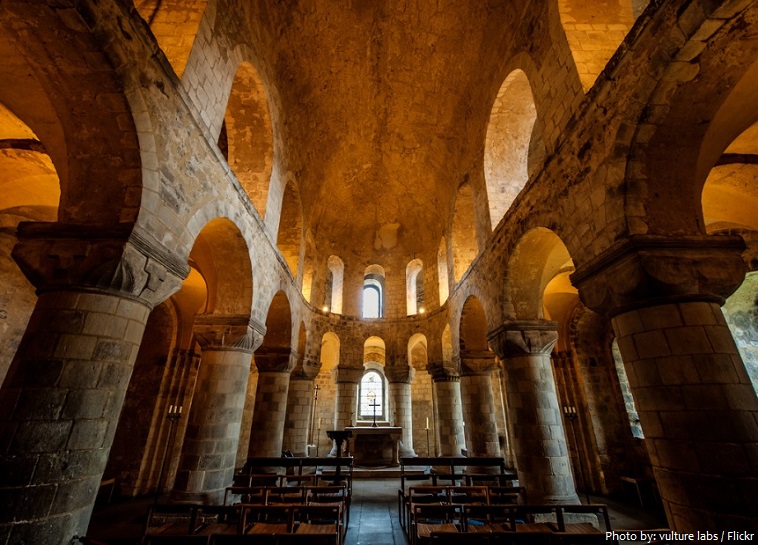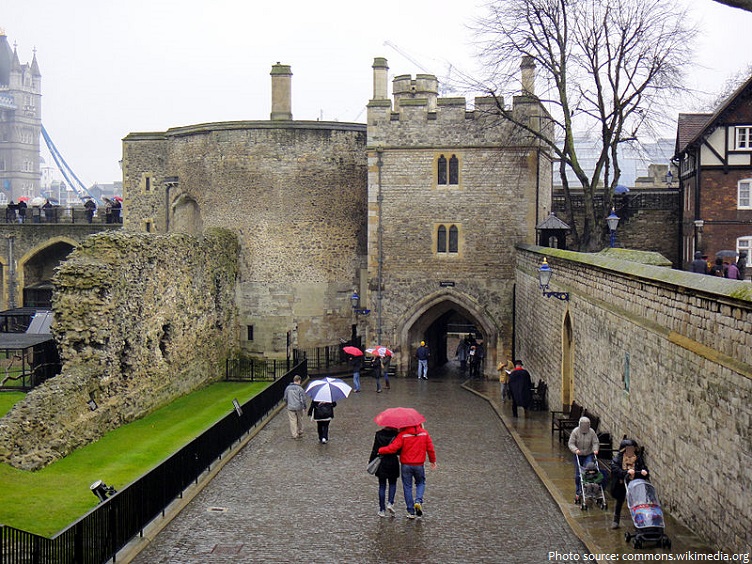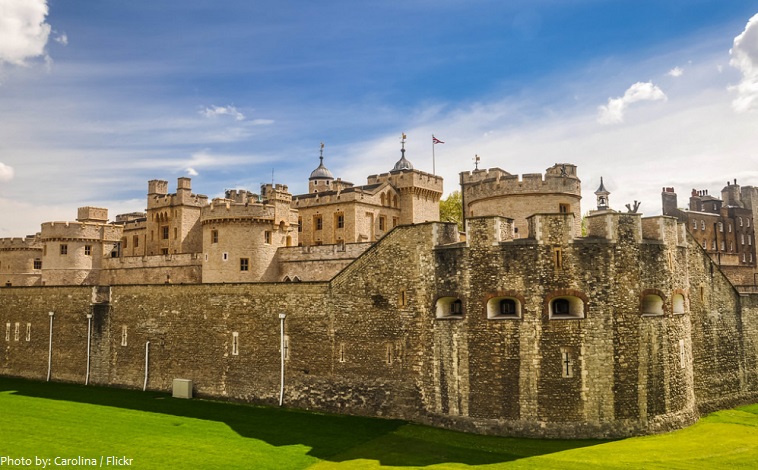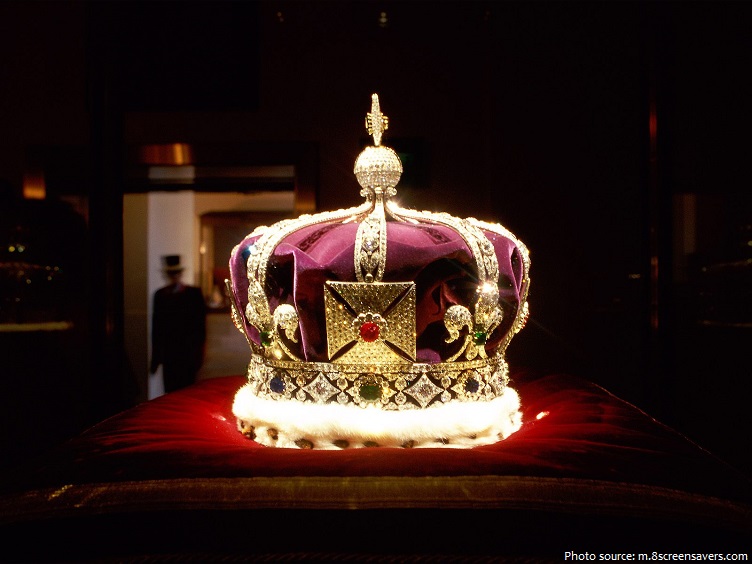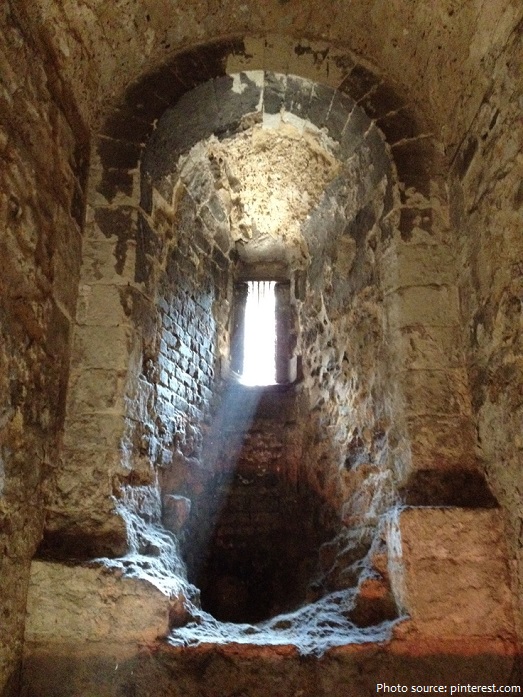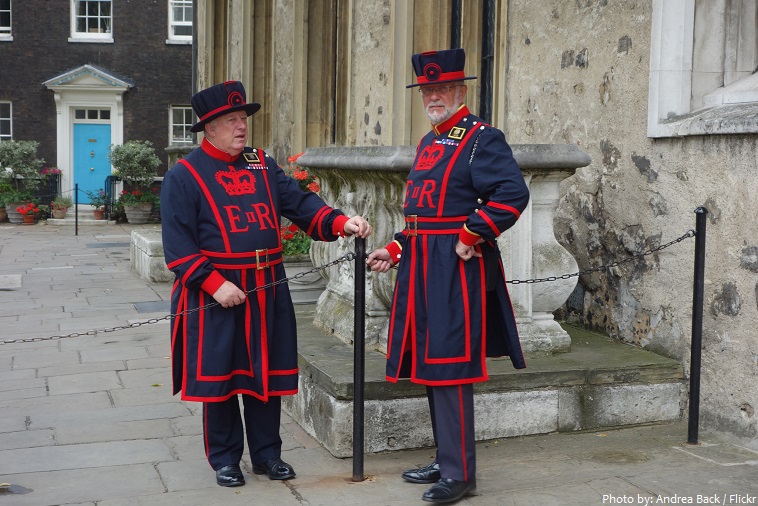The Tower of London, officially Her Majesty’s Royal Palace and Fortress of the Tower of London, is a historic castle located on the north bank of the River Thames in central London.
It is an internationally famous monument and one of England’s most iconic structures.
Used variously throughout its history as a royal palace, an armoury, a prison, an execution chamber, a zoo, a barracks and a jewel house, this working royal castle offers a stunning insight into 1,000 years of history.
The Tower of London was founded towards the end of 1066 as part of the Norman Conquest of England.
The White Tower, which gives the entire castle its name, was built by William the Conqueror, Duke the Normandy in 1078, and was a resented symbol of oppression, inflicted upon London by the new ruling elite.
The Tower of London – an imposing fortress with many layers of history, which has become one of the symbols of royalty – was built around the White Tower.
As a whole, the Tower is a complex of several buildings set within two concentric rings of defensive walls and a moat.
There were several phases of expansion, mainly under Kings Richard the Lionheart, Henry III, and Edward I in the 12th and 13th centuries.
The castle is made up of three “wards”, or enclosures: the innermost ward , the inner ward and the outer ward.
The innermost ward contains the White Tower and is the earliest phase of the castle.
The White Tower is a keep, which was often the strongest structure in a medieval castle, and contained lodgings suitable for the lord – in this case the king or his representative. As one of the largest keeps in the Christian world, the White Tower has been described as “the most complete eleventh-century palace in Europe“.
The White Tower, not including its projecting corner towers, measures 36 by 32 meters (118 by 105 feet) at the base, and is 27 meters (90 feet) high at the southern battlements.
One of the world’s longest running tourist attractions, the Line of Kings exhibition at the White Tower is a magnificent collection of arms and armour. It was established in 1652 – this collection of weaponry includes hunting and sporting weapons from medieval times to the end of the 19th century.
The semi-circular projection in the south-east corner to accommodate St John’s Chapel is almost unparalleled in castle architecture. St John’s Chapel was not part of the White Tower’s original design, as the apsidal projection was built after the basement walls.
The inner ward was created during Richard the Lionheart’s reign, when a moat was dug to the west of the innermost ward, effectively doubling the castle’s size. Henry III created the ward’s east and north walls, and the ward’s dimensions remain to this day.
Enclosing the spacious Inner Ward is a hexagonal wall from which rise 13 towers. Anti-clockwise from the south-west corner they are: Bell, Beauchamp, Devereux, Flint, Bowyer, Brick, Martin, Constable, Broad Arrow, Salt, Lanthorn, Wakefield, and the Bloody Tower [photo below].
The Waterloo Block, a former barracks in the castellated Gothic Revival style with Domestic Tudor details, was built on the site and remains to this day, housing the Crown Jewels on the ground floor.
The Outer Ward was created during Edward I’s extension to the Tower, as the narrow enclosure completely surrounded the castle. It is defended by a second wall, flanked by six towers on the river face, and by two semicircular bastions on the north face.
The castle encloses an area of almost 5 hectares (12 acres) with a further 2.5 hectares (6 acres) around the Tower of London constituting the Tower Liberties.
The Tower of London is still officially a royal residence of Her Majesty The Queen. She has a house onsite called ‘The Queen’s House’ (The King’s House when the Monarch’s male), which she could still inhabit if she wished.
The Tower houses the crown jewels and has done for many centuries now. The estimated value of the crown jewels is said to be in excess of $32 billion with the Star Of Africa alone estimated at $400 million – this is an estimate based on the jewel’s worth as jewels and including their relation to the Monarchy. Their actual value is priceless.
The Tower used to house the Royal Mint from 1279 to 1812.
For over 600 years there was a royal menagerie in the Tower of London. It was founded by King John in the early 1200s and was filled with exotic animals given as royal gifts for the entertainment and curiosity of the court. The first animals to arrive were lions, an elephant and a polar bear which would hunt for fish in the Thames on a lead. Later came tigers, kangaroos and ostriches. The menagerie was closed by the Duke of Wellington in 1835 and the animals became the basis for London Zoo in Regent’s Park.
The castle was used as a prison from 1100 until 1952, although that was not its primary purpose.
22 executions have ever taken place inside the Tower of London. Most happened on the nearby Tower Hill. The last man to be beheaded there was the Jacobite octogenarian Lord Lovat on April 9 1747 and the last execution took place on August 14 1941, when Josef Jakobs, a German spy, was shot by a firing squad.
The Yeoman Warders, also called “Beefeaters,” guard the tower today. Yeoman Warders at the tower are selected for their meritorious service in the Armed Forces. To qualify they must have completed 22 years service in the Forces, the Warders live on site at the Tower. Their uniforms estimated to cost over $9,000 each, as each uniform includes gold thread.
Every evening, at precisely 9:53 pm, a ceremony takes place to lock the Tower of London – the ceremony of the keys. An armed escort of the Queen’s Guards set off with the Chief Yeoman Warder to lock all the gates.
Six ravens live in the tower at all times. According to the legend, if the ravens leave the tower, Britain will
fall.
A legend says that Anne Boleyn, beheaded in 1536 for treason against Henry VIII, walks in the tower with her head under her arm.
In 1988, the Tower of London was added to the UNESCO list of World Heritage Sites, in recognition of its global importance and to help conserve and protect the site.
The main threat to the site today is the exhaust of cars. It’s a problem that threatens to turn the White Tower into a yellow color.
Just over 2.7 million people visited the Tower of London in 2015.
